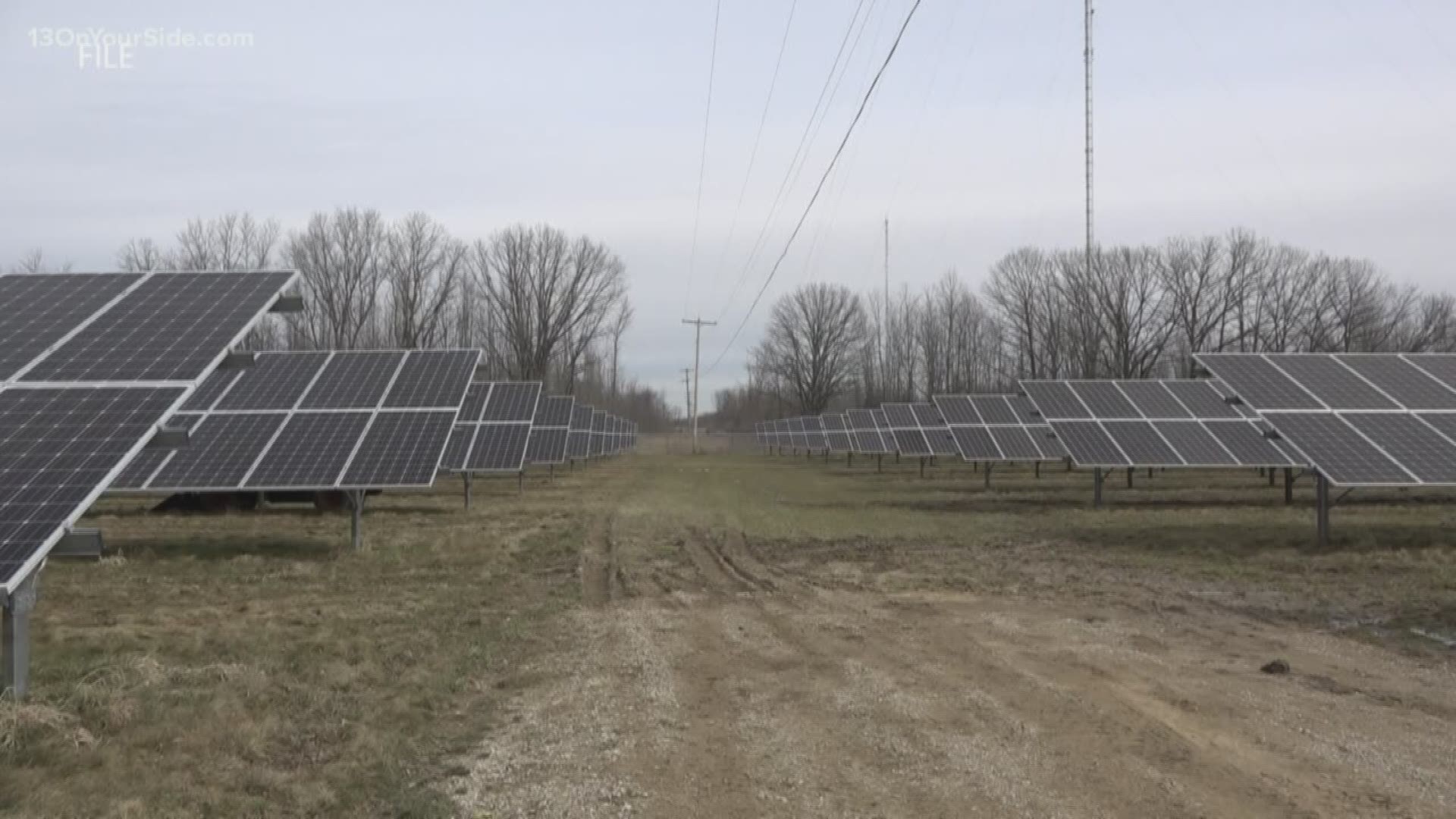GRAND RAPIDS, Mich. — (GRBJ) - Grand Rapids is exploring the potential for solar installations at seven city-owned sites, as well as reviving a failed solar attempt at Butterworth Landfill in its ambitious goal to offset 100% of electricity consumed with renewable sources over the next six years.
Alison Waske Sutter, sustainability and performance management officer for the city, recently presented an energy performance update to the Grand Rapids City Commission. The update included an assessment of eight city-owned facilities for their solar feasibility.
The assessed facilities were Grand Rapids City Hall, Grand Rapids Police Station, Lake Michigan Filtration Plant, Water Resources Recovery Facility, Market Avenue Retention Basin, Butterworth Landfill, DASH Lot 9 and the Bridge Street Fire Station.
In March, the city joined SolSmart in partnership with the National League of Cities. SolSmart recognizes cities, counties and regional organizations for making it faster, easier and more affordable to go solar.
Cities can earn bronze, silver or gold certification through SolSmart. There currently are 275 designees nationwide with Ypsilanti being the only Michigan designated community, earning gold in 2017.
Grand Rapids’ participation in SolSmart is focused in two areas: analyzing where it makes technical and economic sense to install solar on facilities, and assessing regulations and processes for residents or organizations that want to install small solar applications.
Through partnership with SolSmart and the city, the U.S. Department of Energy’s National Renewal Energy Laboratory completed an assessment of solar capabilities for the eight city facilities in July.
According to the assessment, there is space at these facilities — excluding Butterworth, which was treated separately — to install approximately 4,384 kilowatts of solar that would generate approximately 3.9 million kWh per year of renewable energy. The solar installations vary in size from 68 kW for city hall to 2,090 kW at the Lake Michigan Filtration Plant. If installed, these installations would increase the city’s renewable performance from 34% to approximately 40%.
NREL presented an economic analysis of solar installations for seven facilities, minus Butterworth, that indicated it would cost the city more money to construct and operate solar than the city would ever save. However, the Office of Sustainability met with Consumers Energy, members of the Energy Advisory Committee and a solar developer experienced in Michigan solar installations and discovered that the information used to generate the economic assessment was incorrect.
“Although the Office of Sustainability worked with Consumers Energy to confirm the information used for the model, we were unknowingly using different definitions of ‘total consumption,’” Sutter said in a memo. “The misalignment of this key term renders the results of the NREL economic assessment inaccurate.”
Sutter said the Office of Sustainability and Consumers currently are in the process of working with NREL to rerun the analysis.
Consumers Energy also will file a rate case in January with a program for distributed generation that will replace net metering. The Office of Sustainability, members of the Energy Advisory Committee and Consumers Energy are discussing ways the city can collaborate with Consumers Energy to help achieve the city’s energy goals.
This group intends to report on possible opportunities at the October Energy Advisory Committee.
NREL estimated that a 14-megawatt solar array could be installed at Butterworth that would generate approximately 17.8 million kWh per year. Consumers previously estimated a 17.5 MW solar array could be installed at Butterworth that would generate approximately 25 million kWh per year. Both were desk analyses and a more thorough
assessment needs to be completed to conduct a more accurate cost-benefit analysis, Sutter said.
The work highlighted in the presentation was attributed to an energy team, which is a cross-departmental team of city staff focusing on energy work throughout city operations, and an energy advisory committee, which is comprised of community stakeholders representing business, environmental organizations, community nonprofits, academia and governments.
Next steps
Over the next six months, the Grand Rapids Office of Sustainability will work with the energy team and energy advisory committee to:
- Issue an RFP for solar development at Butterworth facilities — an RFP was issued in 2015, but the awarded company went bankrupt — and update NREL’s solar assessment of the other seven facilities
- Identify how many renewable energy credits, from where and at what cost the city should purchase
- Continue developing an LED street lighting strategy
- Create a 100% renewable energy strategy
- Present to the city planning commission and the full city commission options to consider for amending how the city’s zoning ordinance currently treats small scale residential installations
- Provide an update to the city commission on community-facing energy and carbon reduction initiatives, including Zero Cities Project and the GR 2030 District
Health and environment are priority areas in Grand Rapids’ four-year strategic plan, which was adopted in April. Among the objectives in this area is reducing carbon emissions and increasing climate resiliency.
This story originally appeared in the Grand Rapids Business Journal. To find a similar content, pick up a copy or find more on their website.
RELATED VIDEO:
Other GRBJ stories featured on 13 ON YOUR SIDE:
►Make it easy to keep up to date with more stories like this. Download the 13 ON YOUR SIDE app now.
Have a news tip? Email news@13onyourside.com, visit our Facebook page or Twitter. Subscribe to our YouTube channel.


